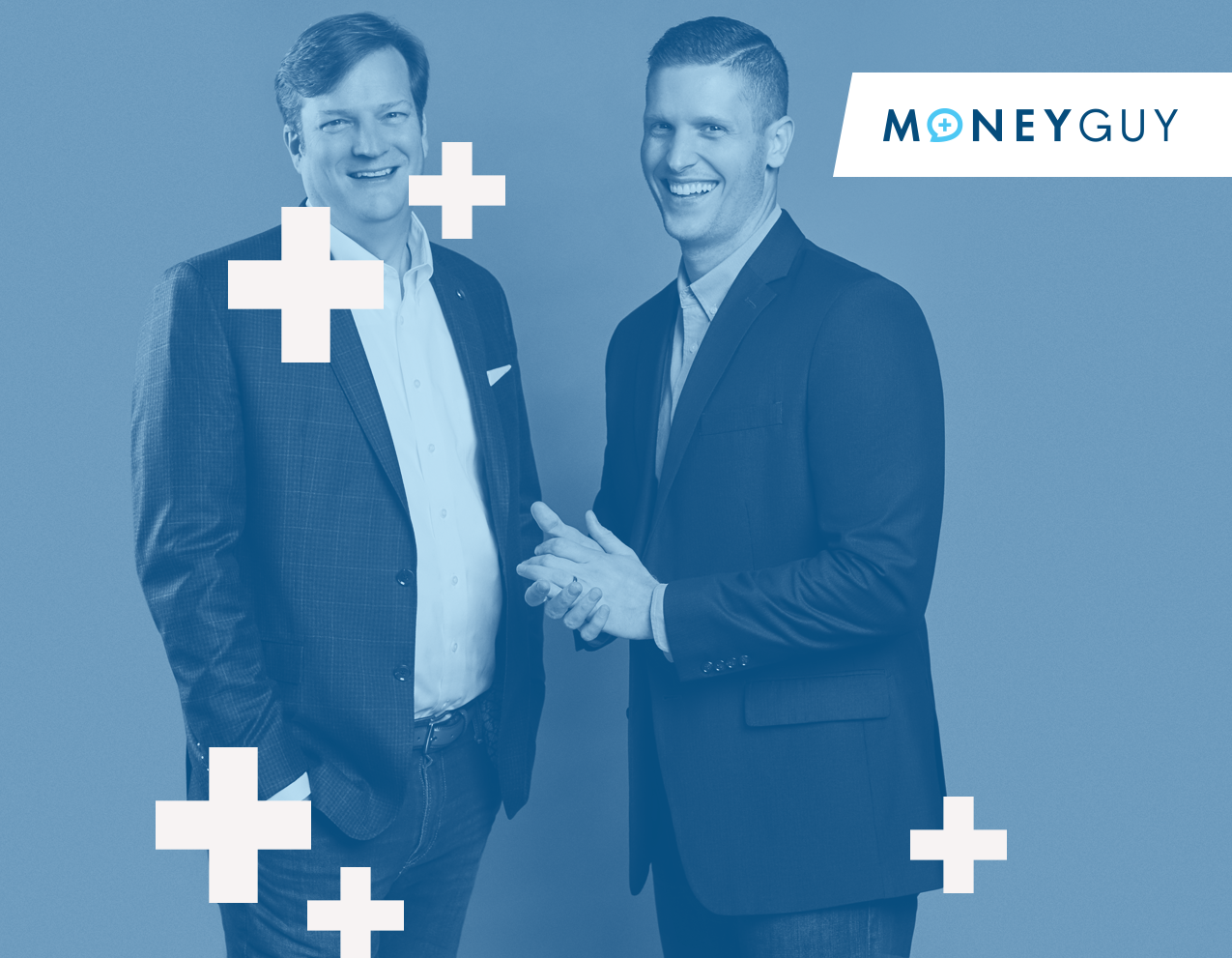
Change your life by
managing your money better.
Subscribe to our free weekly newsletter by entering your email address below.

Subscribe to our free weekly newsletter by entering your email address below.
Imagine two people both earning the median household income of $80,000. Fast forward 10 years:
One is financially free and thriving.
The other is drowning in debt, living paycheck to paycheck.
How did this happen?
While it may sound like fluff, mindset is everything. The way you think about money affects:
How you perceive your financial life.
The financial decisions you make — how you spend and how you save.
Your daily habits — the small choices that snowball into long-term success.
Even with the same income, different mindsets can lead to wildly different outcomes.
Many believe that a high income automatically equals wealth. That’s simply false.
Nearly half of Americans making over $100,000 live paycheck to paycheck.
1 in 4 people making $200,000+ also report insufficient income.
Why?
Also known as “keeping up with the Joneses.”
You get a raise → your spending increases.
That reliable Toyota Corolla suddenly isn’t good enough — you want the BMW.
Fancy job? Time to rent the luxury apartment and finance the new car.
Result: You look rich, but you’re not building wealth.
Fix: Use the 60/40 rule for windfalls like raises or bonuses:
60% goes to savings/investing.
40% can go to lifestyle upgrades (within reason).
“Avoid spending like someone you think is rich — most actual millionaires live modestly.”
Debt reduces your cash flow and slows down wealth building.
People buy more house than they can afford → “house rich, life poor.”
Average credit card payment: $272/month.
With an average of 3.9 credit cards per person, many carry $1,000+ in monthly debt payments.
Lost Opportunity:
If that $1,000 went into investments at a 7% return, it could grow to $170,000+ in 10 years.
A study by RTI International found:
People underestimate their expenses by ~30%.
If you think your expenses are $5,000/month, they may actually be $6,500/month.
This ignorance is a trap.
People avoid tracking spending because it’s painful.
But not knowing where your money is going keeps you broke.
There’s a cost to procrastination. Consider:
Manny invests $500/month from age 20–30, then stops.
Average Allen invests $500/month from age 30–65.
Manny invests less ($60,000 vs. Allen’s $210,000),
but by age 65, Manny has $343,000 more than Allen.
Why? Time and compound growth.
Treat savings like a non-negotiable bill.
Automate it right when you get paid.
If you never see it, you won’t spend it.
This simple habit has made more millionaires than nearly any other.
Building wealth is about:
Mindset
Avoiding traps like lifestyle creep and excessive debt
Creating intentional, repeatable habits
With the right approach, you won’t just look rich — you’ll be rich.
If you’re unsure where to begin, explore the free tools and content at moneyguy.com or their YouTube and podcast channels.
“Money Guy Team — out!”
Subscribe on these platforms or wherever you listen to podcasts! Turn on notifications to keep up with our new content, including:
Imagine two people, both making the median household income of $80,000. In 10 years, one is living a life of financial freedom and complete abundance. The other is drowning in payments, living paycheck to paycheck. How did this happen? What did these two people do differently to end up in such drastically different situations?
A lot of financial success comes down to a few key factors—your mindset. People think this is just fluff, but your perception can literally change the way you see not only your own financial life, but the financial lives of those around you as well. That shift in the way you think can influence your decisions—how you choose to spend and how you choose to save. All those choices eventually become habits. The little decisions that build up over time to create big success—like that little decision to hit the like button. Come on, show us some love.
While they’re not everything, these factors play a huge role in determining whether someone ends up rich or broke, even with the same income. Those small decisions can lead to vastly different financial futures. But a lot of people don’t see that. There’s this enduring myth, especially in the American consumption-based society in which we live, that falsely equates a high income to wealth. People think that a big income is all it takes—that the wealth building will fall right into place, and that if they just make more money, all of their problems will just—poof—go away.
But that’s just not true. Like we said at the start of the video, the median household income is around $80,000, and yet nearly half of Americans that make $100,000 report living paycheck to paycheck. And of those that earn more than $200,000, nearly one in four reported that they were also living paycheck to paycheck as a result of insufficient income.
I just don’t buy it. How could someone making more than twice the median household income have insufficient income? The first big mistake—lifestyle inflation. This is what we like to call the “keeping up with the Joneses,” and I talk about this a lot in my book Millionaire Mission. Lifestyle creep is just the tendency to increase your spending with your income. You get a raise, and suddenly that perfectly good Corolla doesn’t seem good enough anymore. You need that BMW, right? No. That’s wrong. This is exactly how people making six figures end up broke.
Now don’t mishear me—inflating your lifestyle a bit when you increase your income is completely fine. After all, what’s it all for if you can’t enjoy the fruits of your labor from time to time? But don’t go spend the whole raise. Don’t go blow that whole bonus. Use that money responsibly. We like to suggest a healthy 60/40 split when you come into something like a raise or a bonus—60% towards increasing your savings and investments, and 40% towards lifestyle.
But you hear the same thing all too often—someone gets a fancy high-paying job, and they want to be on par with their colleagues or what they perceive rich people do. So they finance the too-nice car and rent the too-nice apartment, and all of a sudden that incredible tool of high income is gone. Who is this guy again? Don’t worry about Pete—he drives a Corvette. He’s doing just fine.
The wealthy people I’ve worked with over the years—they often drive modest cars and live in reasonable homes, even when they can afford much more. They understand that true wealth isn’t about showing off; it’s about building a strong financial foundation and a net worth. Avoiding lifestyle creep is one of the key differences between looking rich and truly being wealthy. And it starts with a mindset. It starts with not feeling the need to look the part and impress your peers with a bunch of material possessions that, in reality, they don’t really care about.
I’m not treating you to lunch anymore.
And avoiding lifestyle creep is something that keeps you from taking on too much debt. And this is the next thing that can determine whether someone ends up wealthy or broke. Now I’m not anti-debt, but taking on too much debt can erode your cash flow and make the wealth-building journey that much harder.
You see this all the time with houses. People buy more house than they can afford. All their spare dollars go toward making the payments, and they have no margin left for saving and investing. That’s what we like to call “house rich, life poor.”
But just as a simple example, let’s focus on credit cards. The average monthly payment at the time of recording is $272. This doesn’t sound like a lot, but the average American has 3.9 credit cards. That means if the average American is carrying the average balance, people are literally walking around with over $1,000 in monthly payments. Even at a conservative 7% rate of return over 10 years, $1,000 a month can grow to over $170,000.
But people don’t take an active role in their financial lives in order to make that a reality. And a lot of this, at the end of the day, comes down to just that—not taking an active role in your financial life.
In a study conducted from RTI International, it was found that individuals incorrectly estimated their expenses by nearly 30%. If your monthly expenses are $5,000, that could mean you are underestimating your expenses by a whopping $1,500 a month. Think about that. Think about what an extra $1,500 a month could do for you right now—because it might be in your budget, sitting right before you. It might take just sitting down and being intentional with your finances.
But most people are flying blind. They don’t sit down and look at their money and see where it’s going—because ignorance is bliss. It’s painful to see all the waste. It’s painful to make a change in lifestyle, even if you’d be better off as a result. So people avoid it.
But avoiding it and sticking your head in the sand is a trap designed to keep you broke. It’s a trap. Do not let this be your situation. Just having the clarity of knowing where your money is going can be a massive step in starting your journey towards wealth-building.
So we’ve gone over the mindset and the decision traps to avoid. Now let’s go over the habits that will actually create wealth. The first one might seem obvious, but it’s just too good not to share to get us started. I know it seems almost too simple, but starting today can be one of the most valuable steps you can take in your financial life. And there’s a true cost to procrastination.
You can have one person—let’s call him Manny, of course, Manny the Mutant—who invests $500 a month from age 20 to 30 and then stops completely. Then you have someone else—let’s call him Average Allen—who starts investing $500 a month from age 30 to 65. Do you see how much more time that is?
Manny invested only $60,000 total, while Average Allen invested a whopping $210,000. Who do you think has the most money by the time they reach age 65? It’s got to be Allen, right?
Shockingly—this is the part that I hope you hear, lean in for this—Manny has $343,000 more than old Average Allen, despite contributing less than a third of that amount. Why? Why? Why? Why? Why?
All because he gave his money that powerful component of time to grow upon itself—that wonderful eighth wonder of the world: compounding growth.
The second habit is what we call paying yourself first. This means treating your savings like any other bill. It gets paid before anything else. Set up automatic transfers on payday, and you won’t even notice the money’s gone. But it’ll keep you from spending it—make that bad habit that much harder.
This one simple habit has created more millionaires than you can imagine. Building these habits can truly reframe your entire relationship with money. It can create what we call an abundance mindset.
Like we said at the beginning, you will literally see money differently—as a tool for growth, not consumption. You will see the value of investing in yourself and the value of making short-term sacrifices for long-term wealth.
And we want to take that journey with you. If you’re unsure of where to start, we make a ton of free premium content available right here on YouTube, on podcast, and at money.com. We’d love to have you come along for the ride.
Money Guy team out.


Financial Order of Operations®: Maximize Your Army of Dollar Bills!
Here are the 9 steps you’ve been waiting for Building wealth is simple when you know what to do and…
View Resource
Net Worth Template
It’s our favorite time of year: time to complete your annual net worth statement!
View Resource


How about more sense and more money?
Check for blindspots and shift into the financial fast-lane. Join a community of like minded Financial Mutants as we accelerate our wealth building process and have fun while doing it.




It's like finding some change in the couch cushions.
Watch or listen every week to learn and apply financial strategies to grow your wealth and live your best life.
Subscribe to our free weekly newsletter by entering your email address below.